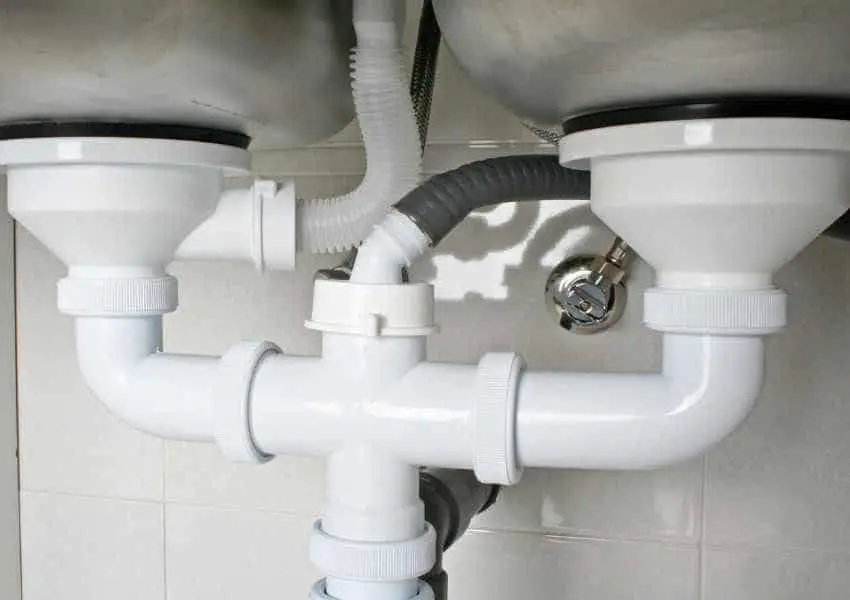As a homeowner, it’s important to be aware of the various ways in which you can damage your plumbing system. One of the most common and potentially costly problems is not knowing what kind of bends can be used in a toilet drain.
Many people think and wonder, “Can a toilet drain have a 90?” but unfortunately, due to the risk of clogging and damage, it’s not recommended. I will talk more about the risks and benefits of using different types of bends in your toilet drain.
Can A Toilet Drain Have a 90?
A toilet drain must never have a 90° elbow installed, as this significantly increases the chances of the drain becoming clogged. PVC 90° elbows are commonly used in water heating installation, as they help to change the direction of pipes.
However, their use on a toilet drain can have disastrous consequences, as they can cause blockages that are difficult to clear. If you are installing a new toilet or making repairs to an existing one, be sure to avoid using PVC 90° elbows.
This will help to keep your toilet drain flowing freely and prevent costly repairs down the road.
Why You Should Use 45° Elbows Instead?
A better option for your toilet drain is to use 45° elbows. This type of bend helps to minimize the risk of a clog while still allowing enough space for the water to flow through at an appropriate rate.
Using 45° elbows also allows you more flexibility when installing new pipes, as they can accommodate a variety of angles. This makes them much easier to work with than a 90° joint, which is typically too tight for most jobs.
Can You Have more than one 90-degree Drain Pipe?
It is not recommended to use more than one 90° joint in any drain pipe, as this can cause clogs and other problems. To avoid kinks and ensure long-term stability, it’s best to limit the bend to 45 degrees and then install a straight pipe before attaching an extra 45-degree twist.
This will help ensure that your toilet drain remains clear and functional for years to come.
FAQ
Do Bends Affect Flow Rate?
The answer to this question depends on the severity of the bend geometry. If the bend is not too severe, it shouldn’t have much of an effect on the flow rate.
However, if the bend is very severe, it could cause flow separation, which would result in a pressure drop and a decrease in flow rate. Therefore, it is important to consider the severity of the bend when determining its effect on the flow rate.
What Angle Should a Toilet Drain Be?

A toilet drain should have a slope of ¼ inch per foot of pipe. In other words, for every foot the pipe travels horizontally, it should be dropping ¼ inch vertically.
This ensures that water will flow downhill into your sewer and will not get backed up in the pipe. If the slope is too steep, the water will move too quickly and will not have time to properly drain.
If the slope is too shallow, the water will not be able to move at all and will simply sit in the pipe. In either case, you could end up with a clogged toilet or a sewage backup. Therefore, it is important to make sure that your toilet drain has the proper slope to ensure proper draining.
Does a Toilet Drain Need to Be Straight?
While a toilet drain does not need to be straight, it does need to follow certain guidelines in order to function properly.
According to the plumbing code, the drain pipe must be sloped a minimum of 1/4 inch per foot and a maximum of three inches per foot.
This ensures that the water will flow properly and that solids will not build up and cause clogs. Additionally, the pipe must be vertical in order to prevent sewage backup.
While a toilet drain does not need to be perfectly straight, following these guidelines is essential for proper function.
What Is the Maximum Slope on A Drain Pipe?
There are a few factors to consider when determining the maximum slope for a drain pipe. The most important factor is the type of material the pipe is made of.
For example, PVC and metal pipes can handle steeper slopes than clay or concrete pipes. The second factor to consider is the type of liquid or solid being drained. Sewage and stormwater, which are heavier than wastewater, will need a slope that is not as steep.
Finally, the size of the pipe also plays a role in determining the maximum slope. Larger pipes can handle steeper slopes than smaller pipes. In general, the maximum slope for efficient drainage is between 1/2 inch and 1 foot per horizontal foot.
However, in some cases, a very steep slope of 45 degrees or more may be necessary. This is typically only seen in vertical pipes, or stacks, which are designed to drain solids and liquids effectively.
Conclusion
The bottom line is that you should never install PVC 90° elbows in your toilet drain. Doing so could cause significant problems down the road and lead to costly repairs.
Instead, opt for 45° elbows, which are much better suited to the job and offer more flexibility. Remember to limit the number of 90° bends in your drain pipe as well, as this can cause clogs and other problems.
By following these simple tips, you can ensure your toilet stays in good working order for years to come.
Happy plumbing!

